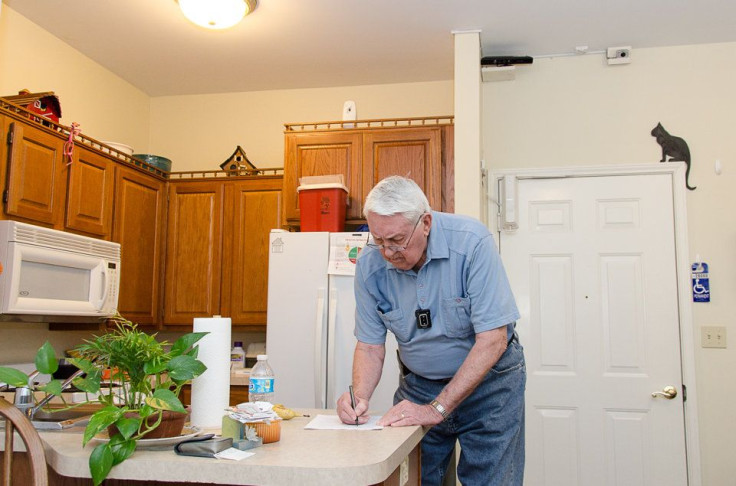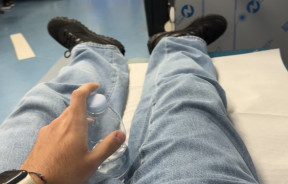In-Home Sensors Monitor Elderly's Safety, Could Alert Family Members To Warning Signs A Week Before Injury

One of the last great hurdles that many senior citizens make is resolving themselves to some form of assisted living. While some see it as liberating, others see it as confining. Researchers from the University of Missouri believe they may have struck a balance between the two.
The TigerPlace retirement community in Columbia, Mo. has recently begun installing motion sensors in its residents' rooms to track their movements and daily functions for any signs of irregularity or bodily danger. Sensors have been mounted on the wall and even beneath the residents' mattresses, which can offer helpful information as to whether a person may have, say, a urinary tract infection.
The researchers' experiments show that certain automatic monitoring can spot changes — such as restlessness in bed or a drop in daytime activity — that occur 10 days to two weeks before a fall or a trip to the doctor or hospital, the Associated Press reports.
Gaining Independence, Safely
Nearly one-third of Americans 40 and older worry about losing their independence, according to a recent survey by the Associated Press-NORC Center for Public Affairs Research. The researchers involved with developing the sensor hope it cultivates a trust among the users, not feelings of intrusion.
"It's insurance in case something should happen," is how Bob Harrison, 85, describes the monitors being tested in his apartment at TigerPlace. Many have lauded the sensors as being unobtrusive: under the bed is an obvious plus; however, a wall-mounted Microsoft Kinect 3-D camera — the same used in video games — also has people keeping to their daily routines.
Senior home monitoring has existed for decades: beginning with simple grab bars in the bathroom to electronic bracelets for seniors prone to falling, scientists are hoping the motion sensors will mark the next phase in home monitoring.
A large plus, they said, is that the person being monitored never has to wear or touch anything; it's all operating in the background.
"When we started this team, I said we are not going to make anybody wear anything or push any buttons," said Marilyn Rantz, an aging-in-place specialist who is leading the research, "because my mother refused and I don't think she's any different than a lot of other people in this world."
A gadget as simple as an under-the-mattress pulse and respiration monitor could signal impending heart failure days before the person becomes short of breath, Rantz said.
The Transition to Home Use
The bigger question is whether simply alerting a loved one, not a nurse, might also help. With a new grant from the National Institutes of Health, Rantz will begin expanding the research to see how this monitoring works in different senior housing. This time, participants can decide if they'd like a family member or friend to get those alerts, in addition to a nurse.
One major detractor at this point is the service's potential cost. Current home monitoring programs can cost anywhere from $70 to several hundred, excluding monthly service charges, said Jeff Makowka, Senior Strategic Advisor in Thought Leadership at AARP.
Makowka also questioned the privacy concerns associated with rigging such monitoring devices in a family member's home. Overcoming those obstacles would come in the service's framing, he said.
To work, the high-tech approach has to be "less about, 'We're watching you, Grandma,' but 'Hey, Grandma, how come you didn't make coffee this morning?'"



























